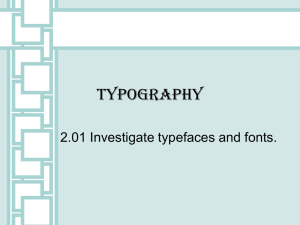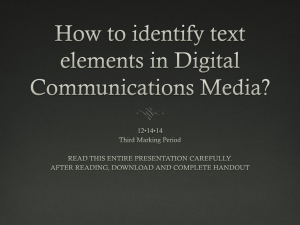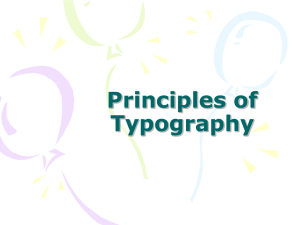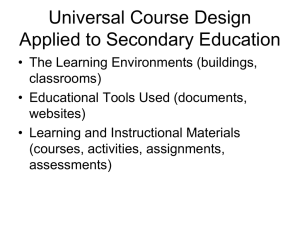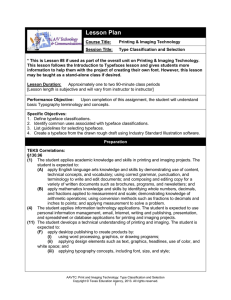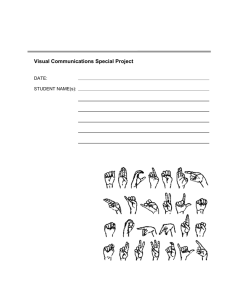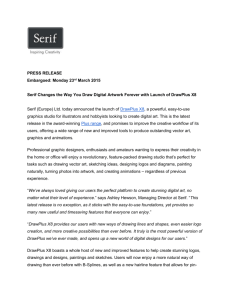Perception of fonts
advertisement
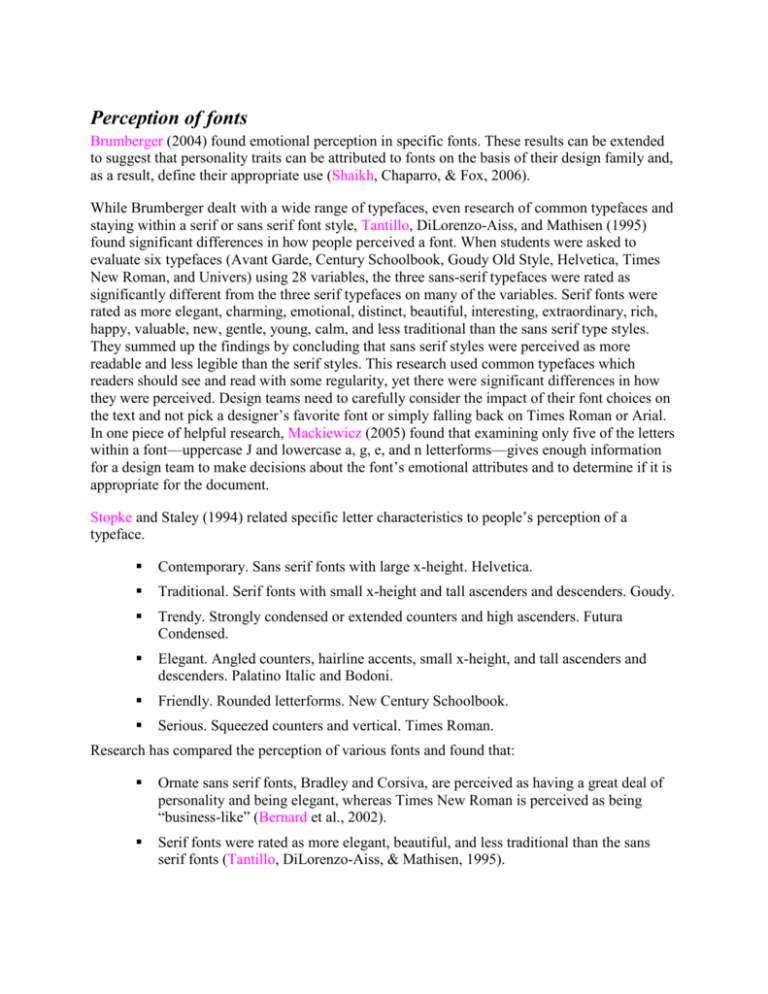
Perception of fonts Brumberger (2004) found emotional perception in specific fonts. These results can be extended to suggest that personality traits can be attributed to fonts on the basis of their design family and, as a result, define their appropriate use (Shaikh, Chaparro, & Fox, 2006). While Brumberger dealt with a wide range of typefaces, even research of common typefaces and staying within a serif or sans serif font style, Tantillo, DiLorenzo-Aiss, and Mathisen (1995) found significant differences in how people perceived a font. When students were asked to evaluate six typefaces (Avant Garde, Century Schoolbook, Goudy Old Style, Helvetica, Times New Roman, and Univers) using 28 variables, the three sans-serif typefaces were rated as significantly different from the three serif typefaces on many of the variables. Serif fonts were rated as more elegant, charming, emotional, distinct, beautiful, interesting, extraordinary, rich, happy, valuable, new, gentle, young, calm, and less traditional than the sans serif type styles. They summed up the findings by concluding that sans serif styles were perceived as more readable and less legible than the serif styles. This research used common typefaces which readers should see and read with some regularity, yet there were significant differences in how they were perceived. Design teams need to carefully consider the impact of their font choices on the text and not pick a designer’s favorite font or simply falling back on Times Roman or Arial. In one piece of helpful research, Mackiewicz (2005) found that examining only five of the letters within a font—uppercase J and lowercase a, g, e, and n letterforms—gives enough information for a design team to make decisions about the font’s emotional attributes and to determine if it is appropriate for the document. Stopke and Staley (1994) related specific letter characteristics to people’s perception of a typeface. Contemporary. Sans serif fonts with large x-height. Helvetica. Traditional. Serif fonts with small x-height and tall ascenders and descenders. Goudy. Trendy. Strongly condensed or extended counters and high ascenders. Futura Condensed. Elegant. Angled counters, hairline accents, small x-height, and tall ascenders and descenders. Palatino Italic and Bodoni. Friendly. Rounded letterforms. New Century Schoolbook. Serious. Squeezed counters and vertical. Times Roman. Research has compared the perception of various fonts and found that: Ornate sans serif fonts, Bradley and Corsiva, are perceived as having a great deal of personality and being elegant, whereas Times New Roman is perceived as being “business-like” (Bernard et al., 2002). Serif fonts were rated as more elegant, beautiful, and less traditional than the sans serif fonts (Tantillo, DiLorenzo-Aiss, & Mathisen, 1995). Georgia is perceived as being significantly more attractive than Arial, Courier, and Comic Sans (Bernard et al., 2002). For the technical documents of interest to HII, it appears that fonts that display overall moderation in their letter characteristics and use less open letter spacing are perceived as readable, professional, and attractive (Mackiewicz, 2007a).
